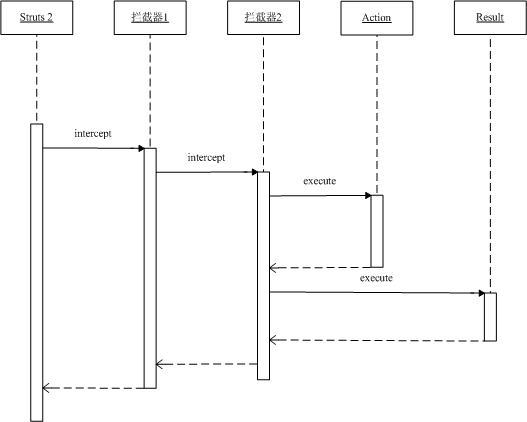- 浏览: 201412 次
- 性别:

- 来自: 北京
-

文章分类
- 全部博客 (163)
- Linux (14)
- html (4)
- Lucene (2)
- WebService (4)
- oracle (7)
- spring (2)
- eclipse (15)
- AIX (2)
- windows (3)
- android (1)
- Java基础 (15)
- Struts (7)
- Java面向对象 (2)
- Java Web (1)
- Apache (2)
- Web容器 (12)
- Google (2)
- javascript (32)
- 爬虫 (2)
- MySQL (4)
- C#开发 (3)
- Hibernate (3)
- 面试题 (2)
- Birt报表 (2)
- Flex (1)
- UML (2)
- 非技术 (3)
- Mercurial(hg) (1)
- css (2)
- SVN (1)
- Mac (1)
- ORM框架 (1)
- 测试技术 (2)
- 浏览器兼容 (5)
最新评论
-
xiebo1983:
http://www.sqkoo.com/show/detai ...
完美解决MySQL中文乱码 -
hzy888:
楼主,你好,你说的问题,我自己写例子测试,没有你说的效果,两个 ...
onblur和onclick冲突 -
ahack:
onblur 谢谢。
onblur和onclick冲突 -
lkf009:
an_it_eye_2012 写道降下来了,怎么再升上去呢,需 ...
Windows IE8降为IE6 -
haohao-xuexi02:
貌似这个方法不错啊
Windows IE8降为IE6
首先,要跟大家道个歉,前一阵子为给客户个一个DEMO,忙得不可开交,所以很久没有更新Blog。提到这个DEMO我想顺便跟大家分享一下心得——如果大家希望快速开发,一个类似Struts 2这样的简单方便的WEB框架必不可少。我们在开发DEMO使用的还是Struts 1.2.8,而且没有不使用任何EL(表达式语言),导致页面出现无数类似“<%= ((Integer) request.getAttribute("xx")).intValue()%6 %>”的代码。Struts 1.x的Form Bean的麻烦使得有部分同事直接使用request.getParameter(String arg),继而引入另一种麻烦。诸如此类的问题,在DEMO这样时间紧迫的项目凸显了Struts 1.x对快速开发的无能为力。不过没办法,由于我们项目中的几个资深员工除了Struts 1.x外,对其它的WEB框架似乎不大感兴趣。
言归正传,Interceptor(以下译为拦截器)是Struts 2的一个强有力的工具,有许多功能(feature)都是构建于它之上,如国际化、转换器,校验等。
什么是拦截器
拦截器,在AOP(Aspect-Oriented Programming)中用于在某个方法或字段被访问之前,进行拦截然后在之前或之后加入某些操作。拦截是AOP的一种实现策略。
在Webwork的中文文档的解释为——拦截器是动态拦截Action调用的对象。它提供了一种机制可以使开发者可以定义在一个action执行的前后执行的代码,也可以在一个action执行前阻止其执行。同时也是提供了一种可以提取action中可重用的部分的方式。
谈到拦截器,还有一个词大家应该知道——拦截器链(Interceptor Chain,在Struts 2中称为拦截器栈Interceptor Stack)。拦截器链就是将拦截器按一定的顺序联结成一条链。在访问被拦截的方法或字段时,拦截器链中的拦截器就会按其之前定义的顺序被调用。
实现原理
Struts 2的拦截器实现相对简单。当请求到达Struts 2的ServletDispatcher时,Struts 2会查找配置文件,并根据其配置实例化相对的拦截器对象,然后串成一个列表(list),最后一个一个地调用列表中的拦截器,如图1所示。

图1 拦截器调用序列图
已有的拦截器
Struts 2已经为您提供丰富多样的,功能齐全的拦截器实现。大家可以到struts2-all-2.0.1.jar或struts2-core-2.0.1.jar包的struts-default.xml查看关于默认的拦截器与拦截器链的配置。
| 在本文使用是Struts 2的最新发布版本2.0.1。需要下载的朋友请点击以下链接: http://apache.justdn.org/struts/binaries/struts-2.0.1-all.zip |
以下部分就是从struts-default.xml文件摘取的内容:
< interceptor name ="autowiring" class ="com.opensymphony.xwork2.spring.interceptor.ActionAutowiringInterceptor" />
< interceptor name ="chain" class ="com.opensymphony.xwork2.interceptor.ChainingInterceptor" />
< interceptor name ="conversionError" class ="org.apache.struts2.interceptor.StrutsConversionErrorInterceptor" />
< interceptor name ="createSession" class ="org.apache.struts2.interceptor.CreateSessionInterceptor" />
< interceptor name ="debugging" class ="org.apache.struts2.interceptor.debugging.DebuggingInterceptor" />
< interceptor name ="external-ref" class ="com.opensymphony.xwork2.interceptor.ExternalReferencesInterceptor" />
< interceptor name ="execAndWait" class ="org.apache.struts2.interceptor.ExecuteAndWaitInterceptor" />
< interceptor name ="exception" class ="com.opensymphony.xwork2.interceptor.ExceptionMappingInterceptor" />
< interceptor name ="fileUpload" class ="org.apache.struts2.interceptor.FileUploadInterceptor" />
< interceptor name ="i18n" class ="com.opensymphony.xwork2.interceptor.I18nInterceptor" />
< interceptor name ="logger" class ="com.opensymphony.xwork2.interceptor.LoggingInterceptor" />
< interceptor name ="model-driven" class ="com.opensymphony.xwork2.interceptor.ModelDrivenInterceptor" />
< interceptor name ="scoped-model-driven" class ="com.opensymphony.xwork2.interceptor.ScopedModelDrivenInterceptor" />
< interceptor name ="params" class ="com.opensymphony.xwork2.interceptor.ParametersInterceptor" />
< interceptor name ="prepare" class ="com.opensymphony.xwork2.interceptor.PrepareInterceptor" />
< interceptor name ="static-params" class ="com.opensymphony.xwork2.interceptor.StaticParametersInterceptor" />
< interceptor name ="scope" class ="org.apache.struts2.interceptor.ScopeInterceptor" />
< interceptor name ="servlet-config" class ="org.apache.struts2.interceptor.ServletConfigInterceptor" />
< interceptor name ="sessionAutowiring" class ="org.apache.struts2.spring.interceptor.SessionContextAutowiringInterceptor" />
< interceptor name ="timer" class ="com.opensymphony.xwork2.interceptor.TimerInterceptor" />
< interceptor name ="token" class ="org.apache.struts2.interceptor.TokenInterceptor" />
< interceptor name ="token-session" class ="org.apache.struts2.interceptor.TokenSessionStoreInterceptor" />
< interceptor name ="validation" class ="com.opensymphony.xwork2.validator.ValidationInterceptor" />
< interceptor name ="workflow" class ="com.opensymphony.xwork2.interceptor.DefaultWorkflowInterceptor" />
< interceptor name ="store" class ="org.apache.struts2.interceptor.MessageStoreInterceptor" />
< interceptor name ="checkbox" class ="org.apache.struts2.interceptor.CheckboxInterceptor" />
< interceptor name ="profiling" class ="org.apache.struts2.interceptor.ProfilingActivationInterceptor" />
配置和使用拦截器
在struts-default.xml中已经配置了以上的拦截器。如果您想要使用上述拦截器,只需要在应用程序struts.xml文件中通过“<include file="struts-default.xml" />”将struts-default.xml文件包含进来,并继承其中的struts-default包(package),最后在定义Action时,使用“<interceptor-ref name="xx" />”引用拦截器或拦截器栈(interceptor stack)。一旦您继承了struts-default包(package),所有Action都会调用拦截器栈 ——defaultStack。当然,在Action配置中加入“<interceptor-ref name="xx" />”可以覆盖defaultStack。
下面是关于拦截器timer使用的例子。首先,新建Action类tuotrial/TimerInterceptorAction.java,内容如下:
 package tutorial;
package tutorial;
 import com.opensymphony.xwork2.ActionSupport;
import com.opensymphony.xwork2.ActionSupport;
 public class TimerInterceptorAction extends ActionSupport {
public class TimerInterceptorAction extends ActionSupport { @Override
@Override public String execute() {
public String execute() { try {
try { // 模拟耗时的操作
// 模拟耗时的操作  Thread.sleep( 500 );
Thread.sleep( 500 ); } catch (Exception e) {
} catch (Exception e) { e.printStackTrace();
e.printStackTrace(); }
}  return SUCCESS;
return SUCCESS; }
}  }
}
配置Action,名为Timer,配置文件如下:
"-//Apache Software Foundation//DTD Struts Configuration 2.0//EN"
"http://struts.apache.org/dtds/struts-2.0.dtd" >
< struts >
< include file ="struts-default.xml" />
< package name ="InterceptorDemo" extends ="struts-default" >
< action name ="Timer" class ="tutorial.TimerInterceptorAction" >
< interceptor-ref name ="timer" />
< result > /Timer.jsp </ result >
</ action >
</ package >
</ struts >
至于Timer.jsp可以随意写些什么到里面。发布运行应用程序,在浏览器的地址栏键入http://localhost:8080/Struts2_Interceptor/Timer.action,在出现Timer.jsp页面后,查看服务器的后台输出。
信息: Executed action [ //Timer!execute ] took 2859 ms.
在您的环境中执行Timer!execute的耗时,可能上述的时间有些不同,这取决于您PC的性能。但是无论如何,2859 ms与500 ms还是相差太远了。这是什么原因呢?其实原因是第一次加载Timer时,需要进行一定的初始工作。当你重新请求Timer.action时,以上输出会变为:
信息: Executed action [ //Timer!execute ] took 500 ms.
OK,这正是我们期待的结果。上述例子演示了拦截器timer的用途——用于显示执行某个action方法的耗时,在我们做一个粗略的性能调试时,这相当有用。
自定义拦截器
作为“框架(framework)”,可扩展性是不可或缺的,因为世上没有放之四海而皆准的东西。虽然,Struts 2为我们提供如此丰富的拦截器实现,但是这并不意味我们失去创建自定义拦截器的能力,恰恰相反,在Struts 2自定义拦截器是相当容易的一件事。
| 大家在开始着手创建自定义拦截器前,切记以下原则: 拦截器必须是无状态的,不要使用在API提供的ActionInvocation之外的任何东西。 |
要求拦截器是无状态的原因是Struts 2不能保证为每一个请求或者action创建一个实例,所以如果拦截器带有状态,会引发并发问题。
所有的Struts 2的拦截器都直接或间接实现接口com.opensymphony.xwork2.interceptor.Interceptor。除此之外,大家可能更喜欢继承类com.opensymphony.xwork2.interceptor.AbstractInterceptor。
以下例子演示通过继承AbstractInterceptor,实现授权拦截器。
首先,创建授权拦截器类tutorial.AuthorizationInterceptor,代码如下:
 package tutorial;
package tutorial;
 import java.util.Map;
import java.util.Map;
 import com.opensymphony.xwork2.Action;
import com.opensymphony.xwork2.Action; import com.opensymphony.xwork2.ActionInvocation;
import com.opensymphony.xwork2.ActionInvocation; import com.opensymphony.xwork2.interceptor.AbstractInterceptor;
import com.opensymphony.xwork2.interceptor.AbstractInterceptor;
 public class AuthorizationInterceptor extends AbstractInterceptor {
public class AuthorizationInterceptor extends AbstractInterceptor {
 @Override
@Override public String intercept(ActionInvocation ai) throws Exception {
public String intercept(ActionInvocation ai) throws Exception { Map session = ai.getInvocationContext().getSession();
Map session = ai.getInvocationContext().getSession(); String role = (String) session.get( " ROLE " );
String role = (String) session.get( " ROLE " ); if ( null != role) {
if ( null != role) { Object o = ai.getAction();
Object o = ai.getAction(); if (o instanceof RoleAware) {
if (o instanceof RoleAware) { RoleAware action = (RoleAware) o;
RoleAware action = (RoleAware) o; action.setRole(role);
action.setRole(role); }
}  return ai.invoke();
return ai.invoke(); } else {
} else { return Action.LOGIN;
return Action.LOGIN; }
}  }
} 
 }
}
以上代码相当简单,我们通过检查session是否存在键为“ROLE”的字符串,判断用户是否登陆。如果用户已经登陆,将角色放到Action中,调用Action;否则,拦截直接返回Action.LOGIN字段。为了方便将角色放入Action,我定义了接口tutorial.RoleAware,代码如下:
 package tutorial;
package tutorial;
 public interface RoleAware {
public interface RoleAware { void setRole(String role);
void setRole(String role); }
}
接着,创建Action类tutorial.AuthorizatedAccess模拟访问受限资源,它作用就是通过实现RoleAware获取角色,并将其显示到ShowUser.jsp中,代码如下:
 package tutorial;
package tutorial;
 import com.opensymphony.xwork2.ActionSupport;
import com.opensymphony.xwork2.ActionSupport;
 public class AuthorizatedAccess extends ActionSupport implements RoleAware {
public class AuthorizatedAccess extends ActionSupport implements RoleAware { private String role;
private String role;
 public void setRole(String role) {
public void setRole(String role) { this .role = role;
this .role = role; }
} 
 public String getRole() {
public String getRole() { return role;
return role; }
} 
 @Override
@Override public String execute() {
public String execute() { return SUCCESS;
return SUCCESS; }
}  }
}
以下是ShowUser.jsp的代码:
<% @taglib prefix = " s " uri = " /struts-tags " %>
< html >
< head >
< title > Authorizated User </ title >
</ head >
< body >
< h1 > Your role is: < s:property value ="role" /></ h1 >
</ body >
</ html >
然后,创建tutorial.Roles初始化角色列表,代码如下:
 package tutorial;
package tutorial;
 import java.util.Hashtable;
import java.util.Hashtable; import java.util.Map;
import java.util.Map;

 public class Roles {
public class Roles { public Map < String, String > getRoles() {
public Map < String, String > getRoles() { Map < String, String > roles = new Hashtable < String, String > ( 2 );
Map < String, String > roles = new Hashtable < String, String > ( 2 ); roles.put( " EMPLOYEE " , " Employee " );
roles.put( " EMPLOYEE " , " Employee " ); roles.put( " MANAGER " , " Manager " );
roles.put( " MANAGER " , " Manager " ); return roles;
return roles; }
}  }
}
接下来,新建Login.jsp实例化tutorial.Roles,并将其roles属性赋予<s:radio>标志,代码如下:
<% @taglib prefix = " s " uri = " /struts-tags " %>
< html >
< head >
< title > Login </ title >
</ head >
< body >
< h1 > Login </ h1 >
Please select a role below:
< s:bean id ="roles" name ="tutorial.Roles" />
< s:form action ="Login" >
< s:radio list ="#roles.roles" value ="'EMPLOYEE'" name ="role" label ="Role" />
< s:submit />
</ s:form >
</ body >
</ html >
创建Action类tutorial.Login将role放到session中,并转到Action类tutorial.AuthorizatedAccess,代码如下:
 package tutorial;
package tutorial;
 import java.util.Map;
import java.util.Map;
 import org.apache.struts2.interceptor.SessionAware;
import org.apache.struts2.interceptor.SessionAware;
 import com.opensymphony.xwork2.ActionSupport;
import com.opensymphony.xwork2.ActionSupport;
 public class Login extends ActionSupport implements SessionAware {
public class Login extends ActionSupport implements SessionAware { private String role;
private String role;  private Map session;
private Map session;
 public String getRole() {
public String getRole() { return role;
return role; }
} 
 public void setRole(String role) {
public void setRole(String role) { this .role = role;
this .role = role; }
} 
 public void setSession(Map session) {
public void setSession(Map session) { this .session = session;
this .session = session; }
} 
 @Override
@Override public String execute() {
public String execute() { session.put( " ROLE " , role);
session.put( " ROLE " , role); return SUCCESS;
return SUCCESS; }
}  }
}
最后,配置struts.xml文件,内容如下:
"-//Apache Software Foundation//DTD Struts Configuration 2.0//EN"
"http://struts.apache.org/dtds/struts-2.0.dtd" >
< struts >
< include file ="struts-default.xml" />
< package name ="InterceptorDemo" extends ="struts-default" >
< interceptors >
< interceptor name ="auth" class ="tutorial.AuthorizationInterceptor" />
</ interceptors >
< action name ="Timer" class ="tutorial.TimerInterceptorAction" >
< interceptor-ref name ="timer" />
< result > /Timer.jsp </ result >
</ action >
< action name ="Login" class ="tutorial.Login" >
< result type ="chain" > AuthorizatedAccess </ result >
</ action >
< action name ="AuthorizatedAccess" class ="tutorial.AuthorizatedAccess" >
< interceptor-ref name ="auth" />
< result name ="login" > /Login.jsp </ result >
< result name ="success" > /ShowRole.jsp </ result >
</ action >
</ package >
</ struts >
发布运行应用程序,在浏览器地址栏中输入:http://localhost:8080/Struts2_Interceptor/AuthorizatedAccess.action。由于此时,session还没有键为“ROLE”的值,所以返回Login.jsp页面,如图2所示:

图2 Login.jsp
选中Employee,点击Submit,出现图3所示页面:

图3 ShowRole.jsp
总结
拦截器是Struts 2比较重要的一个功能。通过正确地使用拦截器,我们可以编写高可复用的代码。
发表评论
-
struts2工作原理
2012-08-10 11:28 675一个请求在Struts2框架中的处理大概分为以下几个步骤: 1 ... -
struts1工作原理
2012-08-10 11:17 853二、struts工作原理 来自客户的所有需要 ... -
struts2源码探索1
2012-07-19 13:55 780package org.apache.struts2.disp ... -
struts2 的set get方法取值原理
2012-07-18 15:21 1739struts2的action会自动的把本身的属性设置到requ ... -
史上最详细struts-config.xml解释文件(二)
2012-04-05 14:15 926史上最详细struts-config.xml解释文件 ... -
Struts 1实现原理之我理解
2012-02-27 10:47 873转自:http://kevin-wanwei.iteye. ...





相关推荐
### Struts2 拦截器 Interceptor #### 一、概述 在Struts2框架中,拦截器(Interceptor)是一种非常重要的机制,它能够帮助开发者实现诸如权限控制、事务管理、日志记录等跨切关注点的功能。通过定义不同的拦截器...
Struts2拦截器(Interceptor) Struts2拦截器(Interceptor)
struts2 拦截器_教程.zip
STRUTS2:拦截器Interceptor
- XML配置:在`struts.xml`文件中,使用`<interceptor>`元素定义拦截器,`<interceptor-stack>`元素组合多个拦截器,`<package>`元素下的`interceptors`属性指定拦截器栈。 ```xml <interceptor name=...
### Struts2 Interceptor 拦截器详解 #### 一、概述 在现代Web开发中,特别是基于Java的Web应用程序开发中,Struts2框架因其简洁性和强大的扩展能力而备受青睐。Struts2框架的核心设计理念之一是MVC(Model-View-...
在Struts2中,拦截器(Interceptor)扮演着核心角色,它们允许开发者在Action执行前后插入自定义的逻辑,如日志、权限检查、事务管理等。现在我们将深入探讨Struts2的拦截器机制及其实例应用。 ### 一、Struts2拦截...
1. **编写拦截器类**:继承`org.apache.struts2.interceptor.StrutsPrepareAndExecuteInterceptor`或实现`com.opensymphony.xwork2.interceptor.Interceptor`接口,并重写`intercept()`方法。 2. **配置拦截器**:在...
### Struts2拦截器详解 #### 一、Struts2拦截器概述 Struts2框架作为Java Web开发中的一种流行框架,其核心组件之一便是**拦截器**。拦截器不仅在Struts2中扮演着重要角色,更是整个框架灵活性与扩展性的基石。...
Struts2是一个流行的Java web框架,它引入了拦截器(Interceptor)的概念,这是一种基于AOP(面向切面编程)的设计模式,用于在Action执行前后插入额外的处理逻辑。拦截器的使用大大增强了代码的可维护性和可扩展性...
在这个“Struts2拦截器实现权限控制demo”中,我们将深入探讨如何利用拦截器来实现细粒度的用户权限管理。 首先,我们需要了解Struts2中的拦截器工作原理。拦截器是基于Java的动态代理模式实现的,它们按照配置的...
Struts2框架中的拦截器(Interceptor)是一种重要的机制,用于在Action执行前后进行一系列处理,比如参数验证、数据预处理等。它能够帮助开发者更加灵活地控制程序流程,提高代码的复用性。 #### 二、Struts2拦截器...
在Struts2中,拦截器(Interceptor)扮演着核心角色,它们允许开发者在动作执行前后插入自定义的逻辑,如日志、权限检查、数据验证等。本示例将探讨如何在Struts2中使用拦截器。 首先,我们需要理解Struts2拦截器的...
在Struts2中,拦截器(Interceptor)是核心功能之一,用于增强应用的功能和处理业务逻辑。拦截器是基于AOP(面向切面编程)的概念,可以在动作执行前后插入额外的操作,比如日志记录、权限检查、数据验证等。 标题...
拦截器是Struts2框架的核心特性之一,它们扮演着处理请求、增强功能和实现业务逻辑的角色。在Struts2中,拦截器就像过滤器一样工作,通过链式调用在动作执行前后进行预处理和后处理。 首先,我们来理解一下拦截器的...
在Struts2中,拦截器是一个实现了`Interceptor`接口的Java类。当一个请求被发送到Struts2框架时,拦截器会按照配置的顺序依次对请求进行处理。每个拦截器都有`intercept()`方法,这个方法会在动作执行前和执行后被...
在Struts2中,拦截器是一个实现了`Interceptor`接口的类,它定义了`intercept()`方法,该方法会在Action执行之前和之后被调用,从而实现对请求的拦截和处理。 ### 二、拦截器栈与配置 Struts2中的拦截器不是单独...
在Struts2中,拦截器(Interceptor)扮演着至关重要的角色,它允许开发者在动作执行前后插入自定义逻辑,如日志记录、权限验证等。在本案例中,我们将深入探讨如何使用Struts2拦截器实现登录权限验证,同时结合...
拦截器是Struts2框架的一个重要组成部分,能够帮助开发者实现一些在请求处理前后执行的通用逻辑,如日志记录、权限验证、数据校验等。在本场景中,我们将探讨如何使用Struts2拦截器来实现对不文明字迹或者敏感词汇的...
这篇博客文章“struts2 拦截器的使用(继承抽象拦截器)”探讨了如何通过继承Struts2的抽象拦截器来创建自定义拦截器。 首先,让我们理解拦截器的基本概念。在Struts2中,拦截器是基于Java的动态代理机制实现的,...